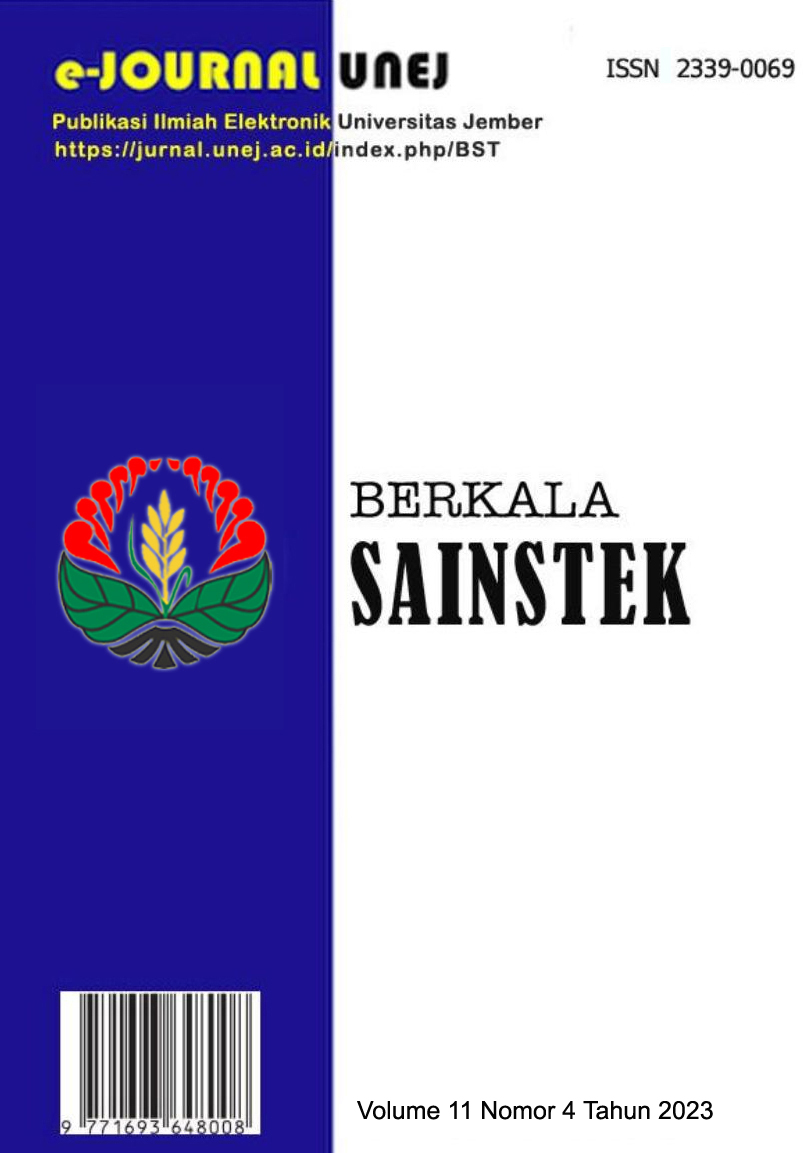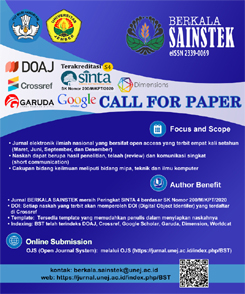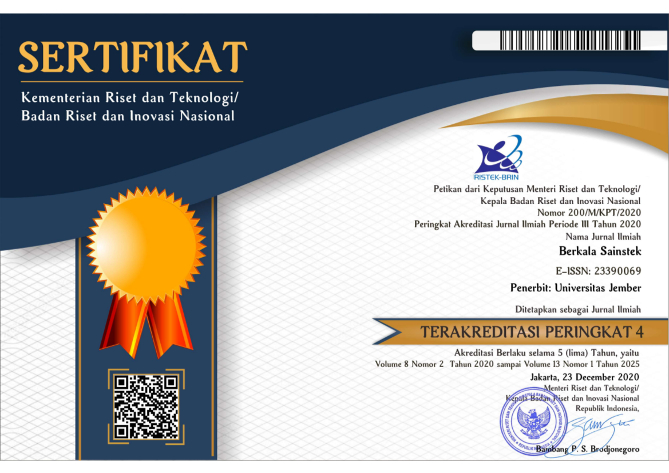Ants Density of Odontomachus sp. and Its Ecological Role in Kendari City Green Open Space
Abstract
The degradation of environmental quality has become a global problem today. One way to address this is by providing green open spaces that help maintain environmental quality. Kendari city has a number of green open spaces (RTH) including, RTH in Baruga sub-district, Kendari mayor's office area and in Nanga-nanga botanical garden of Kendari city. This study aims to determine the density and ecological role of ants (Odontomachus sp.) in green open spaces in Kendari city. The method used in this study was hand sorting using ring samples with a diameter of 20 cm and a height of 15 cm in a plot measuring 25 m x 25 m consisting of 25 sampling points with a distance of 5 m per point. Data analysis was carried out by calculating the density at each research location, namely Baruga green space, mayor's park and Nanga-nanga botanical garden. The results showed that the highest density of ants (Odontomachus sp.) was found in the mayor's park with 16 ind/m2. The ecological role of ants (Odontomachus sp.) in Kendari city green open space is an important role in bioturbation and natural predators of soil fauna such as termites and earthworms.

This work is licensed under a Creative Commons Attribution-NonCommercial 4.0 International License.




.png)



